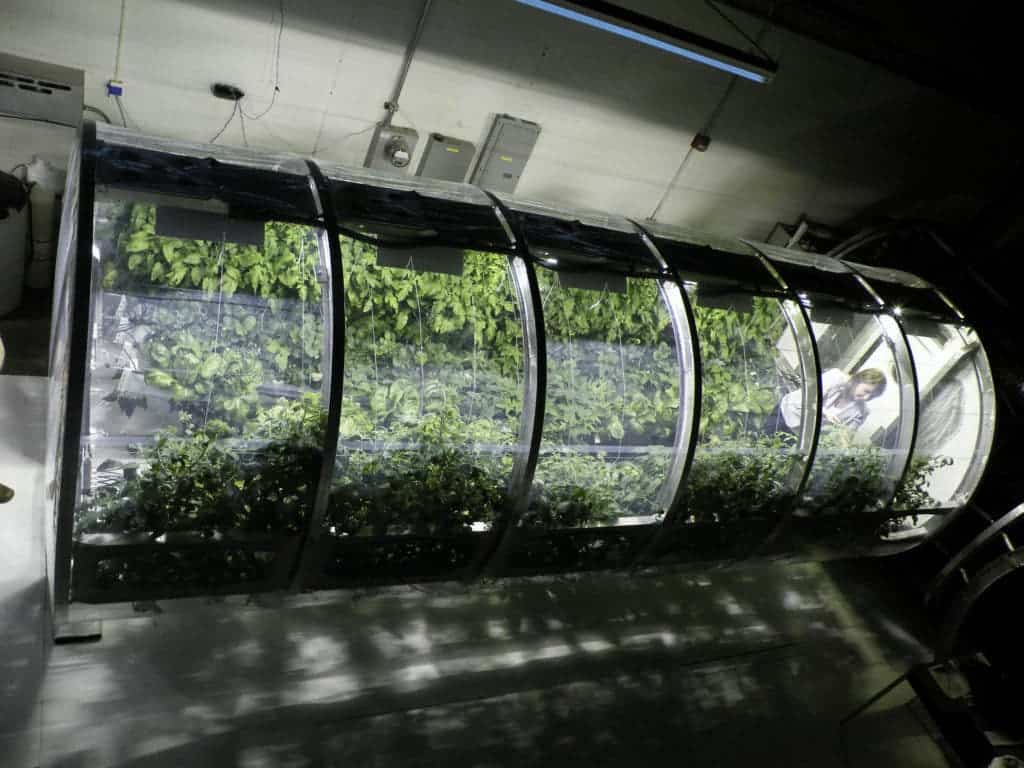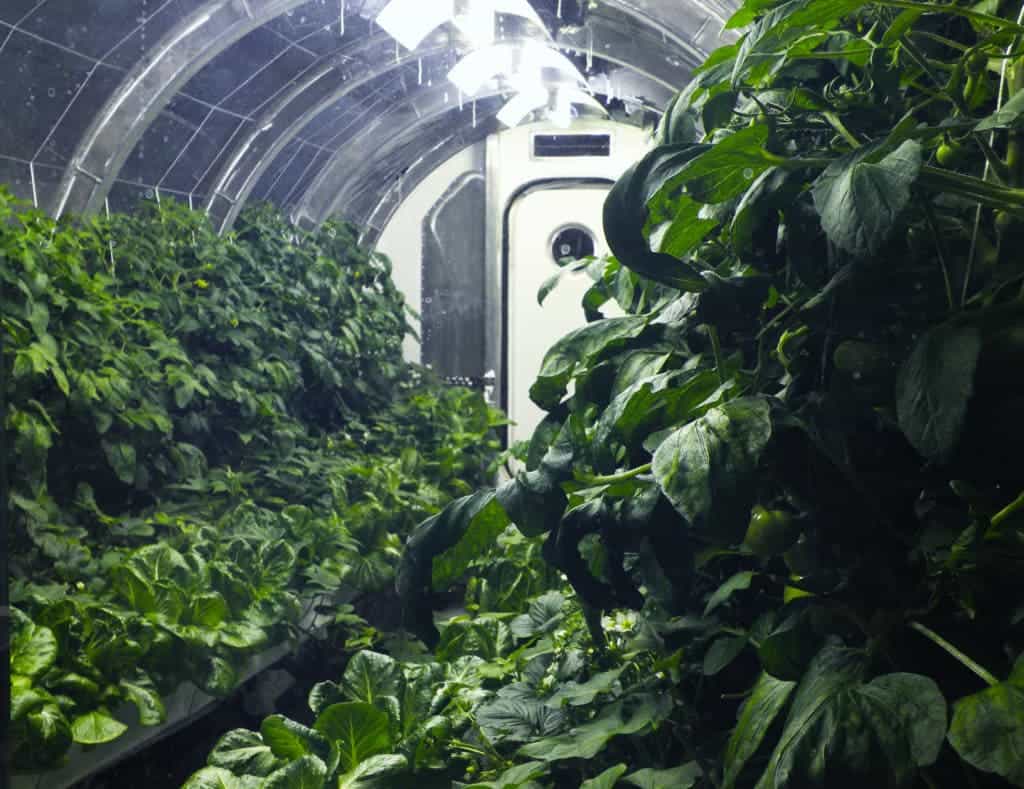Researchers at NASA and the University of Arizona, Tucson will be working together to bring long-term sustainability to our space pioneers — one greenhouse at a time.

Image credits University of Arizona
Astronauts have already shown the world their green thumbs by growing plants and veggies aboard the ISS. But when going farther away from our blue cradle, crews will have to rely on on-site resources for food and oxygen. To make sure they’re well stocked with both on future journeys, NASA researchers at the Kennedy Space Center in Florida and the University of Arizona (UA) are working out how to grow enough plants to feed and air a whole crew on a long-term journey.
“We’re working with a team of scientists, engineers and small businesses at the University of Arizona to develop a closed-loop system,” said Dr. Ray Wheeler, lead scientist in Kennedy Advanced Life Support Research, about the Prototype Lunar/Mars Greenhouse project. “The approach uses plants to scrub carbon dioxide, while providing food and oxygen.”
The prototype is an inflatable greenhouse specifically tuned to keep the plants happy and continuously growing and will provide food, scrub the breathing air while recycling both water and waste. They’re cylindrical, measuring 18 feet in length and more than 8 feet in diameter. They were designed and built by Sadler Machine Company, one of the project partners.
These greenhouses will maintain a waste-none, closed-looped process called a bioregenerative life support system. The CO2 astronauts exhale will be fed through the greenhouse so the plants can photosynthesize and generate oxygen. Water will either be shuttled along from Earth or sourced from “the lunar or Martian landing site,” NASA notes. The liquid will be enriched in gases and nutrient salts and will be pumped across the crop’s roots then recycled — basically, hydroponics in space.

Image credits University of Arizona.
Researchers at the UA are currently testing different species of plants to determine what would survive best, and what buds, seeds, or other material are required to make the greenhouses self-sufficient on a mission. Figuring out what to take and how to best use local resources afterward will be key, since deep space missions will be hard and pricey to constantly supply from home. So, NASA researchers are working on systems which can harness such resources — with an emphasis on water.
“We’re mimicking what the plants would have if they were on Earth and make use of these processes for life support,” said Dr. Gene Giacomelli, director of the Controlled Environment Agriculture Center at the University of Arizona. “The entire system of the lunar greenhouse does represent, in a small way, the biological systems that are here on Earth.”
The greenhouses will likely need to be buried under soil or rock to protect the plants inside from cosmic radiation, which means specialized lighting will be required to keep them alive. Currently, the team has succeeded in using either electrical LED light or hybrid methods “using both natural and artificial lighting” — which involves the use of light concentrators on the surface to track the movement of the sun and feed its light underground through fiber optic channels.
What’s left to do now is to find out how many greenhouses will be needed per crew. Giacomelli says the next step on the agenda is to test with additional units and computer models to ensure a steady supply of oxygen can be produced from the lunar greenhouses.






